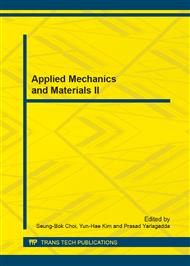p.472
p.476
p.481
p.485
p.492
p.499
p.503
p.509
p.514
Study on Grouting Heave for Pipeline Underground in Urban Tunnel Engineering
Abstract:
Surface settlement and ground loss can be found inevitably and safety risk of pipeline underground is brought consequently due to excavation, no matter what kind of construction method is adopted. Grouting is increasingly used as the corrective measure to minimize the safety risk of pipeline underground, which means grouting in subjacent bed to raising the pipeline and keep settlement in control. Based on the project of raising an existing pipeline by grouting during the construction of the Huangzhuang station of Beijing Metro, general empirical formula and the finite-difference numerical simulation by FLAC are introduced to study the pipeline deformation caused by excavation, fracture grouting is designed in accordance with the factors mentioned above. The research results can provide references to the construction and design of raising pipeline by grouting in urban tunnel engineering.
Info:
Periodical:
Pages:
492-498
Citation:
Online since:
December 2013
Authors:
Price:
Сopyright:
© 2014 Trans Tech Publications Ltd. All Rights Reserved
Share:
Citation:


